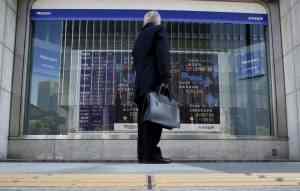

This cross lasted longer, but the next bearish crossover in January occurred near late November price levels, resulting in another whipsaw. This bearish cross did not last long as the 10-day EMA moved back above the 50-day a few days later . After three bad signals, the fourth signal foreshadowed a strong move as the stock advanced over 20%. However, they are less accurate than SMAs when charting long-term trends.
Each average is connected to the next, creating the singular flowing line. The exponential moving average gives more weight to recent prices in an attempt to make them more responsive to new information. To calculate an EMA, the simple moving average over a particular period is calculated first. The time frame for a moving average indicator can be as long or as short as desired. It can be calculated from minute-long, hour-long, daily, weekly, monthly or even yearly data. A trader can also use as many or as few time periods as they want to comprise the average.
The Kairi Relative Index is a technical analysis indicator used to indicate potential buy and sell points based on overbought or oversold conditions. When the MACD is positive, the short-term average is located above the long-term average and is an indication of upward momentum. When the short-term average is below the long-term average, it’s a sign that the momentum is downward. The effects of the particular filter used should be understood in order to make an appropriate choice.
The 150-day EMA turned down in November 2007 and again in January 2008. Notice that it took a 15% decline to reverse the direction of this moving average. These lagging indicators identify trend reversals as they occur or after they occur . Notice that the 150-day EMA did not turn up until after this surge. Moving average crossovers are a popular strategy for both entries and exits. While this may appear predictive, moving averages are always based on historical data and simply show the average price over a certain time period.
Moving averages are calculated based on historical data and nothing about the calculation is predictive in nature. At times, the market seems to respect MA support/resistance and trade signals, and at other times, it shows these indicators no respect. The longer the period for the moving average, the greater the lag.
Notice, when the markets were moving sideways, MA suggested at least 3 trading signals. However, the 4th trade was the winner which resulted in 67% profit. A typical example of this would be to combine a 50 day EMA, with a 100 day EMA.
How to Choose the Proper “Length” of a Moving Average
Remember the basic assumption of technical analysis – markets discount everything. This means the latest price you see discounts all the known and unknown information. This also implies the price on 28th is more sacred than the price on 25th. Moving averages can be calculated for any time frame, from minutes, hours to years. Any time frame can be selected from the charting software-based of your requirements.
Both peaked in late January, but the decline in the EMA was sharper than the decline in the SMA. The EMA turned up in mid-February, but the SMA continued lower until the end of March.
Short-term and then longer-term MAs start to fall at a lagged rate of acceleration. A topping market is the situation where the market advance slows up. With units of the asset passing from earlier buyers to the hands of individuals who are late to purchase. This stage is characterised by the distribution of holdings from savvy traders to latecomers.
The market trades sideways as the asset moves; late-sellers close their positions and early-speculators enter. Simultaneously, longer-term MAs continue to decline but at a lower rate of change. The price of the security will then stop trailing below key MAs and indeed break through them.
A 10-day moving average will hug prices quite closely and turn shortly after prices turn. Short-term moving averages are like speedboats—nimble and quick to change. In contrast, a 100-day moving average contains lots of past data that slows it down. Longer-term moving averages are like ocean tankers—lethargic and slow to change. It takes a larger and longer price movement for a 100-day moving average to change course vs. a 10-day moving average.
By “moving average”, we mean that you are taking the average closing price of a currency pair for the last ‘X’ number of periods. This leads us to a significant conclusion about the moving averages. Moving averages works brilliantly when there is a trend and fails to perform when the stock moves sideways. This basically means the ‘Moving average’ in its simplest form is a trend following system. Likewise, when the stock price trades below its average price, it means the traders are willing to sell the stock at a price lesser than its average price.
In the figure below, the number of periods used in each average is 15, but the EMA responds more quickly to the changing prices than the SMA. The EMA has a higher value when the price is rising than the SMA and it falls faster than the SMA when the price is declining. This responsiveness to price changes is the main reason why some traders prefer to use the EMA over the SMA. Moving averages can be used to detect trends and changes in price. In other words, they can be used to help a trader determine the trend. A simple way to illustrate this is to plot an SMA and look for divergence within the price.

A bearish signal is generated when prices move below the moving average. Price crossovers can be combined to trade within the bigger trend. The longer moving average sets the tone for the bigger trend and the shorter moving average is used to generate the signals. One would look for bullish price crosses only when prices are already above the longer moving average. For example, if price is above the 200-day moving average, chartists would only focus on signals when price moves above the 50-day moving average.
Who invented the moving average?
Dynamic support and resistance levels differ from the traditional horizontal support and resistance lines. Dynamic levels are constantly changing because asset prices are constantly fluctuating, forming a series of differing peaks and troughs. A trader chooses their time frame based on the particular trend they are trying to trade. It is important to note that the greater the number of time periods, the smoother the average will be.

The thing is, if you choose a higher MA cross over, whipsaws are reduced to a great extent. However avoiding whipsaws while using MA system is not possible…especially when the markets are moving sideways. So between the two i.e lower MA and higher MA, I would suggest a higher value MA crossover as it tends to reduces the whipsaws. 100 day EMA with 200 days EMA – use this to identify long term trades , some of them can even last for over a year or more.
Types of Moving Averages
The price may run through it slightly or stop and reverse prior to reaching it. You can avoid whip saws to some extent by using a higher value moving average. Let us apply the MA crossover system to the same BPCL example that we looked at. For ease of comparison, I have reproduced the BPCL’s chart with a single 50 day MA.
In finance, moving averages are often used by technical analysts to keep track of price trends for specific securities. An upward trend in a moving average might signify an upswing in the price or momentum of a security, while a downward trend would be seen as a sign of decline. ABollinger Band®technical indicator has bands generally placed two standard deviations away from a simple moving average.
Simple moving average
In general, a move toward the upper band suggests the asset is becoming overbought, while a move close to the lower band suggests the asset is becoming oversold. Since standard deviation is used as a statistical measure of volatility, this indicator adjusts itself to market conditions. Investors may choose different periods of varying lengths to calculate moving averages based on their trading objectives. Shorter moving averages are typically used for short-term trading, while longer-term moving averages are more suited for long-term investors. The weighting for each older datum decreases exponentially, never reaching zero.
How to Use a Moving Average to Buy Stocks
An exponential moving average is a type of weighted moving average that places greater significance on the most recent data points. As such, it is more reactive to recent price changes than a simple moving average. This has the potential to help traders avoid missing the optimal point to open or close a position. The key difference between them is the weight that is assigned to different historic data points.